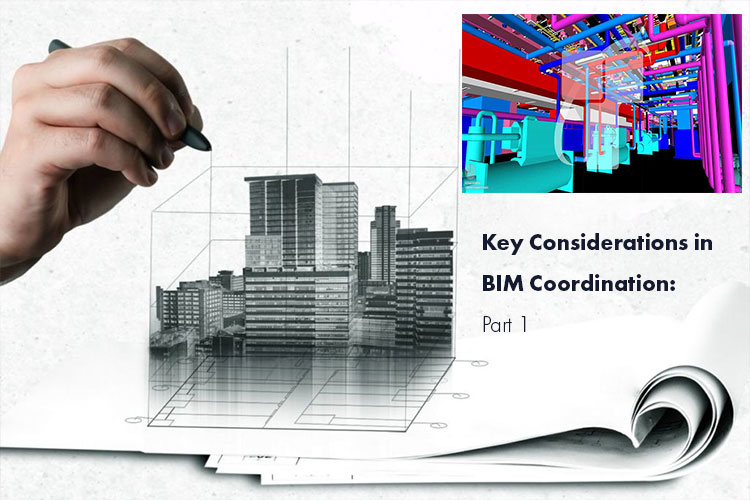Key considerations for a successful multidisciplinary BIM Coordination: Part 1

BIM Coordination Services plays a huge role in improving the construction process. With high-precision Building Information Modeling Services, the architects and engineers can identify any 3D geometrical conflicts and resolve them offsite, before the commencement of the project. Clash Detection eliminates on-site conflicts, coordination issues and saves time, labor, and building costs.
What is Multi-Disciplinary BIM Coordination?
To construct a complex and successful building requires collaboration and exchange of information between all major disciplines i.e. architecture, structural, and MEP engineering. Moreover, within MEP discipline, there are various sub-disciplines (mechanical, electrical, plumbing and fire protection). Clash Detection must take place at both intra discipline and inter discipline levels. It is useful in identifying spatial conflicts, restraints, or sequencing issues, which are then shared with the responsible parties and they can together find a solution. The multidisciplinary model also checks for accuracy of the information, sends collision reports, and creates a list of model elements.
There are a few points that need to be considered in order to ensure that there is successful multidisciplinary BIM Coordination:
1. Stages of BIM Clash Detection:
The clash detection takes places at different levels. During the concept design phase BIM will help give accurate visualization of space, enabling the architects and engineers to get a proper understanding of the space and how different components will fit into it. This is followed by a detailed design, which is used to issue IFC (Issue for Construction). It gives a report of any major clashes that are taking place in the project. Finally, the shop drawings extracted from the 3D Model, are utilized by the contractors to cross check for clashes during the construction process.
2. Geo-Reference:
Geo-Referencing is extremely vital to identify correct clashes during the BIM Coordination process. The different models of architectural, structural, and MEP models must be set precisely in order to get the correct clash detection. The models that have completely different coordinate systems or have been shifted by a few centimeters can lead to two outcomes. In one scenario there can be no clash collisions resulting from the fact that models were not overlapping and in rare cases, it might even detect wrong clashes.
3. Choosing the right software:
Clash Detection Services are an important part of the BIM process and hence it is crucial that the right software is used. This software allows file reading, model data validation, grouping detected collisions, etc. Revit has an in-built interference check which allows for Clash Detection, it however has certain limitations. Navisworks is more predominantly used. With Navisworks clash detection can be used as a one-time final “sanity check” or it can be used as an audit check of any ongoing project. In Navisworks clash detection tools can also be combined with other tools like object animation to check interferences with moving objects or with TimeLiner for time-based checks.
We have till now discussed what is Multi-Disciplinary BIM Coordination and its importance for any successful construction process. We have also analyzed the three things any BIM Modeler must be careful about while conducting BIM Coordination. In the subsequent blog we will be talking about how to set precise tolerances, generating clash reports and how to move ahead with clash resolution.